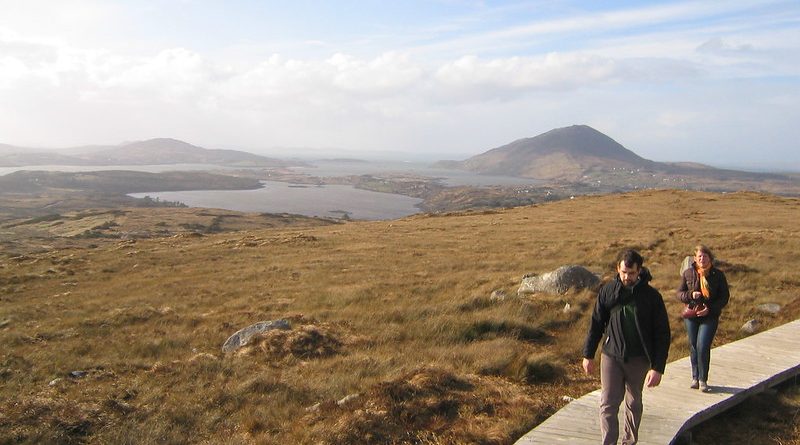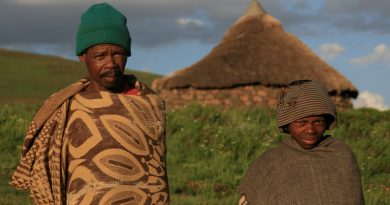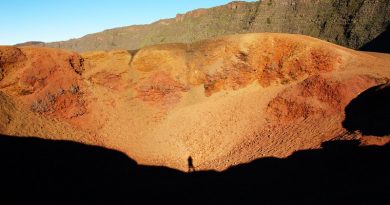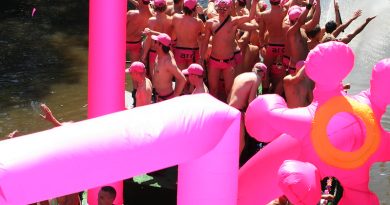Hiking in Connemara
Trek Essentials
Where: County Galway west coast of Ireland
Best season: Summer (June – September) for the brightest, warmest weather and less chance of rain
Best sights: cloud capped mountains, boglands, kaleidoscopic coloured moors
Remember to bring: good boots, drinking water, wet weather gear and a mobile phone for emergencies
Watch out for: take care not to get stuck and stranded in bog land
Where it’s At
If you are in Ireland to hike, there can be few better places than Connemara. The name itself has the power to excite, conjuring up images of cloud capped mountains. Add to this empty miles of bog and moor land, the red, oranges, purples and browns of the course moor grass, wild stray sheep in the fields and on the roads, and the people few and far between, all held in by the Atlantic Ocean on one side, the mountains, lakes and forests on the other, and roofed with a ceiling of moody clouds.
The main walks in Connemara are in the National Park, the Maumturk Mountains and the grey peaks of the Twelve Bens, which dominate the centre of Connemara. The mountains look south over the plains of glacial lakes running south to the sea in a maze of rivulets, sandy islands, and white sparkling sandy beaches. It is not impossible to find yourself sharing an isolated sand dune, accompanied only by a trickling stream, quiet sheep, and the mist creeping up into the mountains. Small, weather beaten houses are the norm here, and even those are few and far between. Many locals make a living off the land either by rearing sheep, or cutting turf from the bog so you may well come across an occasional worker on your hike.
Walks and Sights:
There are trails to suit everyone from novice to expert, and the landscape will not disappoint.
Connemara National Park and Diamond Hill
Diamond Hill is the lowest of the hills in the area, set apart from the taller Twelve Bens. It is a good introduction to the ecology and wildlife in the area, and is the easiest walk, although it is still prone to sudden mists and rain, as are all the trails in the area are.
Get a map, such as the Heritage Service’s ‘Connemara National Park’ 1:100,000. You may also want to buy the walking guide from the Park visitor centre, The Sruffaunboy Nature Trail. The walk itself immediately goes into expanses of moor land, until you come to the Yellow Stream. From there a rough path leads up into Diamond Hill, and back again.
Doughruagh & Kylemore Abbey
A slightly harder climb is into the steep hills around Kylemore Abbey and its lough. The lonely, imposing monastery on the lake is a beautiful sight during the climb up the craggy rock which,
thankfully, is much easier than it appears. The monastery and its grounds can be visited for a nice way to wind down after the walk.
Central Maumturks
Any walk in the Maumturks is formidable. It is rough terrain and there are few well trodden routes. It is fun however to find your way amidst the rock, grass, scree, and heather.
The Twelve Bens – Glencoaghan Horseshoe
All hikes in the Bens are strenuous. The Glencoaghan Horseshoe route takes you round the south of the Bens which are aligned in a star-shaped pattern, and takes in their highest peak. The northern summits, though not as tall, are much more complicated. If you are worried about the dangers there is a mountain rescue team. Get their number before you start.
There are plenty of other walks outside the National Park. Some options to consider are:
A Benbaun Circuit, The Bangor Trail, The Foxford Way, The Western Way –
Mayo, The Western Way – Connemara, Slievemore, Killary Harbour, Tully Mountain and Errisberg.
Safety Advice
– Before going on a hike in Connemara make sure you take safety into account. Check the days weather forecast and be prepared. Perhaps ask at the walking centre in Connemara, or the rescue service if the weather is suitable for hiking. Tell someone where and when you
are going.
– Bring a mobile phone if you have one.
– Don’t forget to wear suitable footwear and clothing and take ample food, light, drinks,
and maps.
– Remember not to wander off alone, and be careful where you stand as Connemara is bog land. Bog land is quite wet, and can sometimes be swampy. Don’t get stuck by yourself in the middle of nowhere along! You may not be lucky enough to have one of the local turf cutters
passing by.
Practicalities
Travel
Connemara is reasonably well served by public transport and has plenty of accommodation. Trains and buses from Dublin to Galway City are very frequent. Car is the best way to get to this part of Ireland, and the drive from Dublin is a smooth 3-4 hour affair. Travelling into Connemara will almost certainly require a car. Public transport is available, but in the West of Ireland it’s best to drive yourself.
Where to stay
Once in Galway, the choice is whether to base yourself in the city or move out into one of the small local towns.
It is difficult to pick out one town in which to base yourself for hiking in Connemara. Galway City with its narrow streets and bustling pubs, is a delight. It is by far the West Coast’s liveliest town and, perhaps, one of the liveliest towns in Ireland. Its university attracts young, artistic, vibrant students, and the resulting nightlife is excellent. Pubs are full of mixed friendly crowds of both old and young, foreign and local. For those who mourn the loss of the rock and indie club, Galway is the place to be, although fans of dance, R&B and techno are catered for also.
Galway’s town centre lies on both sides of the River Corrib, and its shops are sufficient for all the basics and gifts. More attractive to visitors is the cracking daily market which features some of the finest jewellery, breads, meats and cheeses in Ireland. The city also attracts many musicians, artists, spiritualists, and those involved in complimentary medicine, creating a nice edge to a city that seems almost too cool to be true, considering its location. There are many great festivals in Galway so make sure to check out what is on before you go.
Outside of Galway, any of the villages along the West Coast are very cosy stays. Villages like Athenry, Clifden, Ballinasloe, Spiddal, Tuam and many more will have good pubs, friendly people, decent food, and a reasonable B&B for a night’s stay.
Weather
Connemara experiences the extremes of West Coast weather. At times it seems as if a rain cloud is somehow following you around, but even that can add to the beauty of the place. On a good day there are few better places to be. Summer is the best time to walk in Connemara as the wet ground may have dried out. Bring boots, drinking water and wet gear.
Research
If you want to get a feel for the area it is always a good idea to read some work from the area. Some famous writers, from the locality or people who’ve written about it, are John Millington Synge and Walter Macken who describe a bleak land that the people have an inexplicable, strange connection too. You will see why once you start your hike.
Other Things to See and Do in Connemara:
Dan O’Hara’s Homestead at Connemara Heritage and History Centre
Nestling on the hillside beneath the Twelve Bens is the restored cottage of Dan O’Hara, a man made famous in song and story. From the hilltop above the farm, there is a spectacular view of the Roundstone Bog stretching towards the Atlantic Ocean. To the left of the viewing
site there is an Upland Burial Site (5000 years old) which has revealed much about early Bronze Age activity in Connemara. The History Presentation and Audio Visual Guide introduces Connemara’s formative events from pre-historic times to the present. Other features
include reconstructions of a crannóg (pre-historic lake dwelling), ring fort, and clochaun (Early Christian Oratory). Turf cutting, sheep herding and other demonstrations can be arranged for groups on request.
A coastal drive or cycle
One of the best things a tourist in Ireland can do is travel along the West Coast from Clare to Sligo, taking in Bunratty, Ennis, Cliffs of Moher, Lisdoonvarna, Galway, Clifden, Cong, Westport, Weesalia, Dromore and Collooney. The first part of the trip from Clare to Galway gives you the chance to see the Cliffs of Moher, Golleen Bay, Loop Head (one of the nicest stretches of road in the country), beach houses, The Bog Road between Cashel and Clifden, and a host of other remote sights. The second part of the journey from Mayo to Sligo is wild, remote countryside with quiet roads and amazing scenery. There is an opportunity to stay in castles for a few nights at Belleek Castle, Markree Castle (one of the oldest in Ireland), andTeach Iorrais (pronounced ‘chock urrish’). Some of the many sights to look forward to are the road along Lough Easky, the road from Dromore West to Collooney, and the road out to Teach Iorrais.
More Information
Connemara Walking Centre
This site gives local information on mountain walks, heritage walks and West Coast Island walks.
Ireland Bus Travel
Lists of travel throughout Ireland.
main image c/o: Christophe Meneboeuf, Picture shot in the western part of Connemara, County Galway, Ireland.
By Colin Jennings




